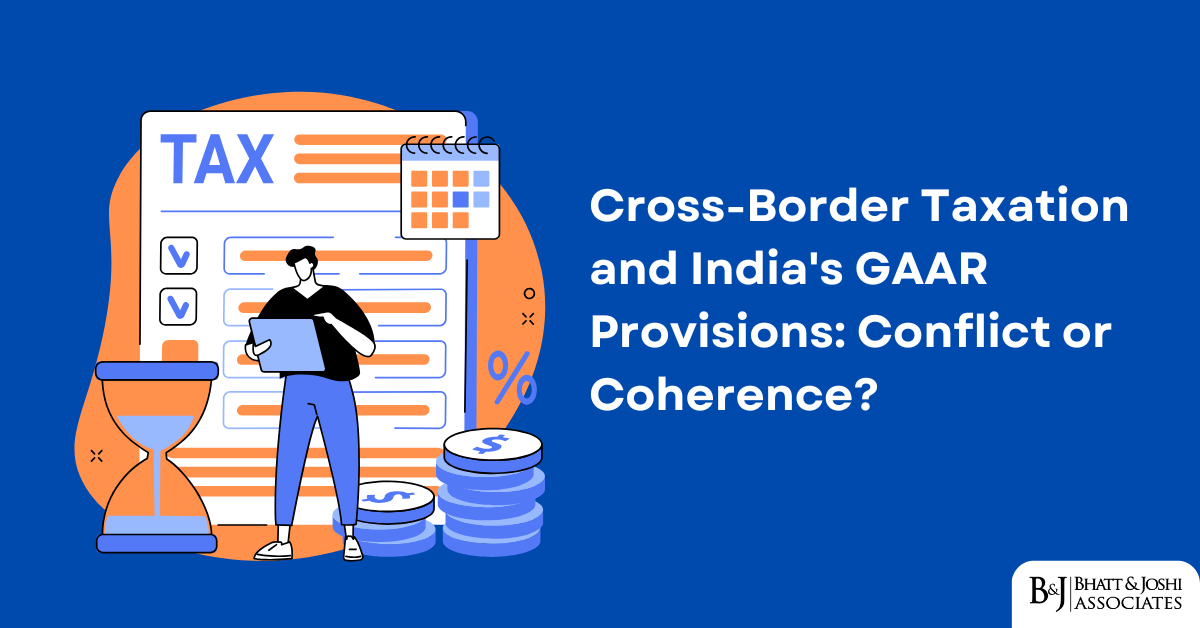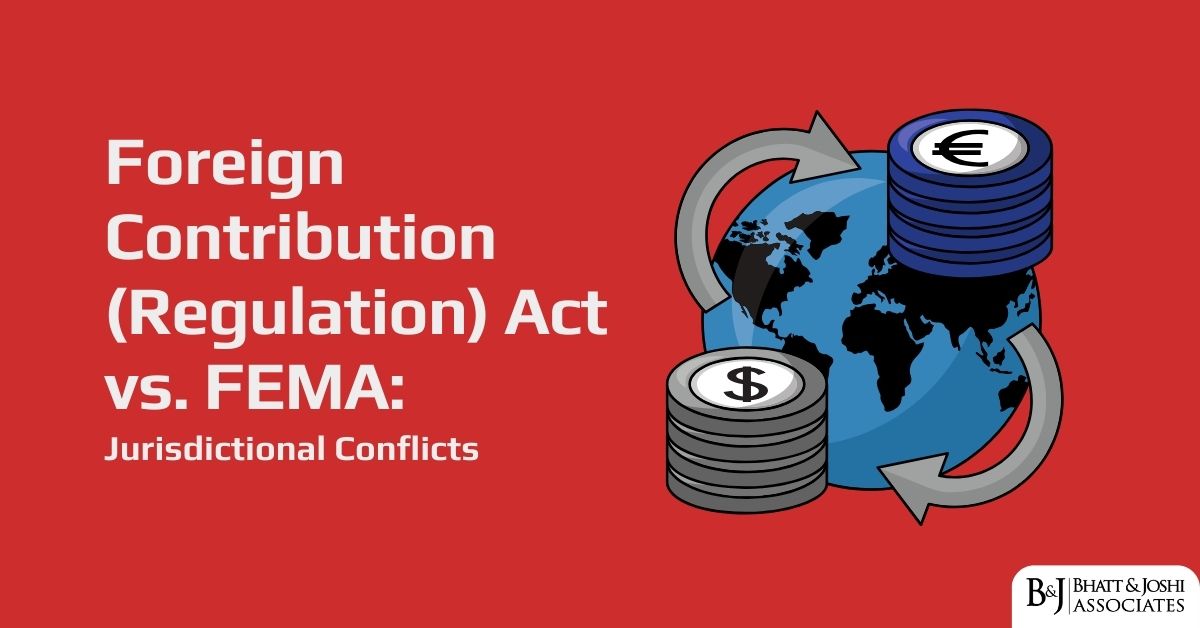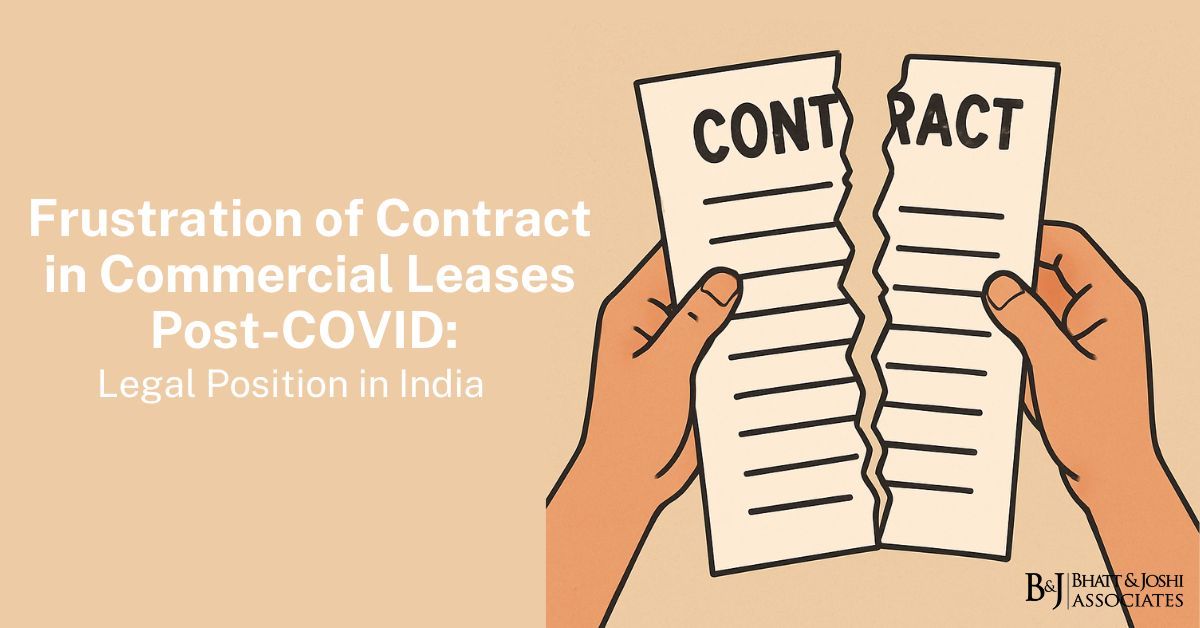Introduction
In an era of globalized business operations and sophisticated cross-border tax planning, nations worldwide have been compelled to develop robust anti-avoidance frameworks to protect their tax base. India’s response to this challenge culminated in the introduction of General Anti-Avoidance Rules (GAAR) under Chapter X-A of the Income Tax Act, 1961, effective from April 1, 2017. These provisions represent a paradigm shift in India’s approach to tax avoidance, moving from specific anti-avoidance rules targeting particular transactions to a principles-based framework addressing the substance of arrangements. The implementation of GAAR has raised significant questions about its interaction with existing cross-border taxation frameworks, including tax treaties, transfer pricing regulations, and specific anti-avoidance rules. This article examines the complex relationship between India’s GAAR provisions and cross-border taxation, analyzing areas of potential conflict and coherence. It delves into the statutory framework, judicial interpretations, international comparisons, and practical implications for taxpayers engaged in cross-border activities. Through this analysis, the article aims to provide clarity on whether GAAR complements or conflicts with existing cross-border tax frameworks, offering insights into navigating this complex terrain.
Statutory Framework of India’s GAAR Provisions
Legislative Evolution
The journey toward implementing GAAR in India has been marked by extensive deliberation and multiple revisions. The provisions were first introduced by the Direct Taxes Code Bill, 2010, but were subsequently incorporated into the Income Tax Act through the Finance Act, 2012. Following concerns from various stakeholders, their implementation was deferred multiple times before finally taking effect from April 1, 2017.
Section 95 of the Income Tax Act establishes the foundational premise of GAAR:
“Notwithstanding anything contained in the Act, an arrangement entered into by an assessee may be declared to be an impermissible avoidance arrangement and the consequence in relation to tax arising therefrom may be determined subject to the provisions of this Chapter.”
This provision explicitly overrides other provisions of the Act, signaling the legislature’s intent to give GAAR precedence in cases of conflict with other provisions.
Key Concepts and Definitions
The GAAR framework hinges on several critical concepts:
- Impermissible Avoidance Arrangement (IAA): Section 96(1) defines an arrangement as an IAA if its main purpose is to obtain a tax benefit and it satisfies any of the four specified tests:
“(a) creates rights, or obligations, which are not ordinarily created between persons dealing at arm’s length;
(b) results, directly or indirectly, in the misuse, or abuse, of the provisions of this Act;
(c) lacks commercial substance or is deemed to lack commercial substance under section 97, in whole or in part; or
(d) is entered into, or carried out, by means, or in a manner, which are not ordinarily employed for bona fide purposes.” - Lack of Commercial Substance: Section 97 elaborates on this concept, specifying various scenarios where an arrangement shall be deemed to lack commercial substance, including:
- Substance or effect of the arrangement as a whole differs significantly from the form
- Round-trip financing or accommodating party involvement
- Elements that have effect of offsetting or canceling each other
- Transactions conducted through tax-favorable jurisdictions
- Tax Benefit: Defined in Section 102(10) as:
“(a) a reduction or avoidance or deferral of tax or other amount payable under this Act; or
(b) an increase in a refund of tax or other amount under this Act; or
(c) a reduction in total income; or
(d) an increase in loss, in the relevant previous year or any other previous year”
Consequences and Procedural Safeguards
Section 98 outlines the consequences of an arrangement being declared an IAA, which may include:
- Disregarding, combining, or recharacterizing the arrangement
- Treating the arrangement as if it had not been entered into
- Reallocating income, expenses, relief, or tax credits
- Recharacterizing equity as debt, capital as revenue, etc.
Procedural safeguards are established in Section 144BA, requiring approval from the Principal Commissioner or Commissioner before invoking GAAR and providing the taxpayer with an opportunity to be heard. For cases exceeding specified thresholds, approval from an Approving Panel comprising three members is mandatory.
Rule 10U further provides specific exclusions, including:
- Arrangements where the tax benefit does not exceed ₹3 crore
- Foreign Institutional Investors not claiming treaty benefits
- Non-resident investments in FIIs
- Income from transfer of investments made before April 1, 2017
India’s GAAR and Taxation Treaties: Navigating the Overlap
The Treaty Override Question
A central question in the GAAR-treaty relationship is whether domestic GAAR provisions can override tax treaty benefits. Section 90(2) of the Income Tax Act provides that the provisions of the Act shall apply to the extent they are more beneficial to the assessee than the treaty provisions. However, Section 95 begins with “Notwithstanding anything contained in the Act,” creating potential ambiguity about its application to treaty benefits.
The CBDT Circular No. 7 of 2017 attempted to clarify this issue:
“It is declared that GAAR provisions shall not apply to such right of the assessee as expressly granted under the treaty which is unambiguous. However, in case a tax treaty contains specific anti-avoidance rules (such as Limitation of Benefits), the same shall continue to apply even if GAAR is invoked.”
This formulation suggests a nuanced approach where GAAR may override treaty benefits in cases of ambiguity or where the treaty itself does not expressly prohibit application of domestic anti-avoidance rules.
Judicial Guidance on Treaty-GAAR Interaction
The Supreme Court’s landmark decision in Union of India v. Azadi Bachao Andolan (2003) 263 ITR 706, which predates GAAR, recognized tax planning as legitimate but distinguished it from colorable devices. The Court observed:
“It is well settled that the benefits of a tax treaty can be legitimately availed of by tax planning that is not a colorable device. However, where the sole purpose of an arrangement is to avoid tax without any commercial substance, the revenue authorities are not precluded from examining its true nature.”
Post-GAAR implementation, the Authority for Advance Rulings in Tiger Global International II Holdings (AAR No. 1555 of 2019) addressed the interplay between GAAR and the India-Mauritius tax treaty. The AAR observed:
“The GAAR provisions enable examination of the substance of arrangements that appear designed primarily to access treaty benefits without sufficient economic substance. This is consistent with the international principle that treaties should be interpreted in good faith and in light of their object and purpose.”
Principal Purpose Test and GAAR
The introduction of the Principal Purpose Test (PPT) in India’s tax treaties, particularly through the Multilateral Instrument (MLI), has added another layer to the treaty-GAAR interaction. The PPT denies treaty benefits if obtaining such benefits was one of the principal purposes of an arrangement.
In AB Holdings Ltd. v. Commissioner of Income-tax (2023), the Income Tax Appellate Tribunal Delhi observed:
“The Principal Purpose Test under the MLI and India’s GAAR provisions share conceptual similarities in focusing on the purpose of arrangements. However, they remain distinct legal instruments with different thresholds and consequences. While PPT applies specifically to treaty benefits, GAAR has broader application to the provisions of the Income Tax Act.”
GAAR and Transfer Pricing: Dual Anti-Avoidance Frameworks
Conceptual Relationship
Transfer Pricing (TP) regulations under Section 92 to 92F of the Income Tax Act and GAAR represent two distinct anti-avoidance frameworks with potential overlap. While TP provisions focus specifically on pricing of international transactions between associated enterprises, GAAR addresses broader tax avoidance arrangements.
Rule 10U(1)(d) provides that GAAR shall not apply to “any arrangement where the main purpose of a part or step thereof is to obtain a tax benefit, but the main purpose of the overall arrangement is not to obtain a tax benefit.” This creates potential confusion in the context of transfer pricing adjustments, where the primary purpose of the transaction might be commercial but the pricing aspect might be motivated by tax considerations.
Judicial Clarifications
The Mumbai Bench of the Income Tax Appellate Tribunal in Mahindra & Mahindra Ltd. v. ACIT (ITA No. 8458/Mum/2010) provided some clarity:
“Transfer pricing provisions operate within a specific domain, addressing the arm’s length pricing of international transactions between associated enterprises. GAAR, on the other hand, examines the overall arrangement to determine if its main purpose is to obtain a tax benefit. These provisions should be viewed as complementary rather than conflicting, with transfer pricing being the first line of defense against pricing manipulation and GAAR serving as a broader anti-avoidance measure.”
CBDT Circular Guidance
CBDT Circular No. 7 of 2017 addressed the GAAR-TP relationship:
“GAAR and SAAR can coexist and are applicable, as may be necessary, in the facts and circumstances of the case. In a case where SAAR is applicable, GAAR may not be invoked. However, in cases of abusive, contrived and artificial arrangements, as illustrated below, GAAR may be invoked.”
The circular provided illustrative examples where GAAR might apply despite transfer pricing provisions, including:
- Arrangements involving interpositioning of entities without commercial substance
- Substantive commercial activities carried through low-tax jurisdictions with minimal economic substance
- Complex structuring with no commercial substance
GAAR and Specific Anti-Avoidance Rules: Finding Harmony
Statutory Relationship
Besides transfer pricing, the Income Tax Act contains numerous Specific Anti-Avoidance Rules (SAARs) addressing particular types of tax avoidance, including:
- Section 94 (Dividend stripping)
- Section 40A (Transactions with related persons)
- Section 80IA(8) (Inter-unit transfer pricing)
- Section 2(22)(e) (Deemed dividend)
The relationship between these SAARs and GAAR is addressed in Rule 10U(1)(c), which states that GAAR shall not apply where “the tax benefit arises from the arrangement is explicitly granted by the provisions of the direct tax laws.”
Judicial Interpretation
The Delhi High Court in CIT v. Hindustan Coca Cola Beverages Pvt. Ltd. (2021) 438 ITR 226 considered the relationship between GAAR and SAARs:
“The General Anti-Avoidance Rules and Specific Anti-Avoidance Rules represent complementary approaches to addressing tax avoidance. Where a specific provision adequately addresses a particular type of avoidance, the need to invoke the more general provision may be diminished. However, where the specific provision is circumvented through a complex arrangement beyond its explicit scope, GAAR provides a necessary backstop.”
International Perspective
The approach of treating GAAR and SAARs as complementary is consistent with international practice. In the United Kingdom case of Schofield v. HMRC [2012] UKFTT 398, the First-tier Tribunal observed:
“Specific anti-avoidance provisions target known avoidance schemes and provide certainty in their application. General anti-avoidance rules, by contrast, address the mischief of avoidance more broadly, preventing the exploitation of gaps or unintended consequences in specific provisions. Both serve important functions in a comprehensive anti-avoidance framework.”
Extraterritorial Application of GAAR
Statutory Scope
The potential extraterritorial application of GAAR arises from its focus on “arrangements” rather than specific transactions or entities. Section 102(1) defines “arrangement” broadly as:
“any step in, or a part or whole of, any transaction, operation, scheme, agreement or understanding, whether enforceable or not, and includes the alienation of any property in such transaction, operation, scheme, agreement or understanding.”
This definition, coupled with the fact that Section 96 does not explicitly limit GAAR’s application to domestic arrangements, creates the possibility of its application to arrangements wholly or partly outside India.
Jurisdictional Considerations
The question of GAAR’s extraterritorial application was considered by the Authority for Advance Rulings in Mahindra British Telecom Ltd. (AAR No. 869 of 2010), albeit in a pre-implementation context:
“While tax laws primarily operate within territorial boundaries, they may extend to foreign elements where there is a sufficient nexus with the taxing jurisdiction. In the context of GAAR, this nexus would typically be established through the tax benefit arising in India, regardless of where the arrangement is executed or implemented.”
Comparative Approaches
Australia’s GAAR provisions under Part IVA of the Income Tax Assessment Act 1936 have been applied to arrangements with foreign elements. In Federal Commissioner of Taxation v. Spotless Services Ltd. (1996) 186 CLR 404, the High Court of Australia upheld the application of GAAR to an arrangement involving investments in the Cook Islands.
Similarly, Canada’s GAAR under Section 245 of the Income Tax Act has been applied to cross-border arrangements. In Canada Trustco Mortgage Co. v. Canada [2005] 2 SCR 601, the Supreme Court of Canada noted that GAAR could apply to transactions with foreign elements where they result in tax benefits within Canada.
India’s GAAR Effect on Cross-Border Taxation Structures
Impact on Holding Company Structures
Multinational enterprises frequently establish holding company structures in jurisdictions with favorable tax treaties to manage investments efficiently. Following GAAR implementation, such structures face increased scrutiny.
In Aditya Birla Nuvo Ltd. (AAR No. 1177 of 2011), the Authority for Advance Rulings examined a holding structure involving Mauritius and observed:
“The mere interposition of a holding company in a tax-favorable jurisdiction does not per se constitute impermissible avoidance. However, where such a company lacks economic substance and exists primarily to access treaty benefits, it may fall within the ambit of GAAR.”
Key factors that tax authorities consider in evaluating holding structures include:
- Substance in the holding jurisdiction (staff, premises, decision-making)
- Business rationale beyond tax benefits
- Actual control and management of the holding entity
- Economic activities beyond passive holding
Implications for M&A Transactions
Cross-border mergers and acquisitions often involve complex structuring to optimize tax outcomes. Post-GAAR, such transactions require careful consideration of both form and substance.
In Vodafone International Holdings BV v. Union of India (2012) 341 ITR 1, the Supreme Court had held that the transfer of shares of a foreign company that indirectly held Indian assets was not taxable in India. However, this position was subsequently altered through retrospective amendments to the Income Tax Act.
In the GAAR era, similar transactions would face scrutiny under Section 96(1) to determine if they constitute IAAs. The Mumbai bench of the Income Tax Appellate Tribunal in NGC Networks (India) Pvt. Ltd. (ITA No. 7994/Mum/2011) noted:
“Cross-border M&A transactions must be examined not merely for legal compliance but also for their commercial substance. Where the structure exists primarily to achieve tax benefits rather than commercial objectives, GAAR provisions may apply to recharacterize the arrangement based on its substance.”
Impact on Financing Structures
Under the framework of Cross-Border taxation and India’s GAAR Provisions, financing arrangements—including hybrid instruments, thin capitalization structures, and back-to-back loans—face particular scrutiny.
In Zaheer Mauritius v. DIT (2014) 270 CTR 214, the Authority for Advance Rulings examined a financing structure involving a Mauritius entity and observed:
“Financing arrangements must reflect genuine commercial relationships rather than mere tax-driven structures. Where the form of financing (such as debt versus equity) is chosen primarily for tax advantages rather than commercial considerations, there is potential for GAAR application.”
Key risk factors in financing structures include:
- Artificial debt-equity ratios inconsistent with commercial norms
- Interest rates substantially diverging from market rates
- Back-to-back arrangements with minimal spread
- Financing through entities with no substantive functions
Judicial Approaches to GAAR Application
Emerging Judicial Standards
While comprehensive judicial guidance on GAAR application remains limited due to its relatively recent implementation, emerging decisions provide insight into developing standards.
In Ardex Investments Mauritius Ltd. (AAR No. 1428 of 2012), the Authority for Advance Rulings outlined an analytical framework:
“The application of GAAR requires a multi-step analysis: first, identifying the arrangement; second, determining whether the main purpose of the arrangement is to obtain a tax benefit; third, assessing whether the arrangement satisfies any of the four tests under Section 96(1); and finally, determining the appropriate consequences under Section 98.”
Burden and Standard of Proof
The question of who bears the burden of proof in GAAR cases has been addressed in various forums. In Khatau Holdings and Investment Pvt. Ltd. v. ACIT (ITA No. 5104/Mum/2018), the Mumbai ITAT observed:
“While the initial burden rests with the tax authority to demonstrate prima facie that an arrangement constitutes an IAA, once this threshold is met, the onus shifts to the taxpayer to establish that obtaining a tax benefit was not the main purpose of the arrangement and that it has commercial substance beyond tax considerations.”
Regarding the standard of proof, the Delhi High Court in CIT v. Dalmia Promoters Pvt. Ltd. (2018) 408 ITR 375 noted:
“GAAR provisions represent an extraordinary power and must be applied with caution. The standard of proof required is not mere suspicion but clear and convincing evidence that the main purpose of the arrangement is to obtain a tax benefit and that it lacks commercial substance or otherwise satisfies the criteria under Section 96(1).”
Relevance of Non-Tax Commercial Considerations
A recurring theme in GAAR jurisprudence is the evaluation of non-tax commercial considerations. In Serco BPO Private Limited v. AAR (2015) 379 ITR 256, the Punjab and Haryana High Court emphasized:
“The existence of tax benefits does not automatically trigger GAAR. Where an arrangement is supported by substantive commercial considerations, the mere fact that it is structured in a tax-efficient manner does not render it impermissible. The assessment must consider the totality of the arrangement, including both tax and non-tax factors.”
International Perspectives and Harmonization
OECD’s BEPS Initiatives and Indian GAAR
The OECD’s Base Erosion and Profit Shifting (BEPS) project represents a global response to tax avoidance, with Action 6 (Preventing Treaty Abuse) and Action 7 (Preventing the Artificial Avoidance of Permanent Establishment Status) having particular relevance to GAAR.
In Macquarie Bank Limited v. Commissioner of Income Tax (2022) 443 ITR 189, the Delhi High Court observed:
“India’s GAAR provisions align conceptually with the OECD’s BEPS initiatives, particularly regarding substance over form and the prevention of treaty abuse. This alignment facilitates a harmonized approach to cross-border tax avoidance while respecting India’s unique economic context and treaty network.”
Comparative Analysis with Foreign GAARs
India’s GAAR shares conceptual similarities with similar provisions in other jurisdictions but also contains distinctive elements:
- UK’s GAAR: Introduced in 2013, requires a “double reasonableness” test where arrangements must be “not reasonable” and requires approval from an independent GAAR Advisory Panel before application.
- Australian GAAR: Part IVA requires identification of a “scheme” and a “tax benefit” and applies where obtaining the tax benefit was the “sole or dominant purpose” of the scheme.
- South African GAAR: Section 80A-L of the Income Tax Act applies where the “sole or main purpose” was to obtain a tax benefit and contains similar tainted elements to India’s GAAR.
In Vodafone India Services Pvt. Ltd. v. Union of India (2014) 368 ITR 1, the Bombay High Court noted:
“While international precedents on GAAR application provide valuable guidance, India’s GAAR must be interpreted within its specific statutory context and constitutional framework. Foreign decisions, while persuasive, cannot be mechanically applied without considering these contextual differences.”
Treaty Policy Evolution
India’s treaty policy has evolved significantly in the GAAR era, with newer treaties incorporating anti-abuse provisions. The renegotiation of the India-Mauritius treaty in 2016, removing the capital gains tax exemption, exemplifies this evolution.
In AB Holdings Ltd. v. DIT (AAR No. 1505 of 2013), the Authority for Advance Rulings observed:
“India’s treaty policy has undergone a paradigm shift toward preventing treaty abuse while maintaining incentives for legitimate investment. GAAR should be viewed as complementary to this evolving treaty policy rather than conflicting with it.”
Practical Strategies for GAAR Compliance
Substance Requirements of GAAR Compliance in Cross-Border Taxation
Establishing and maintaining substance in cross-border structures is paramount for compliance with Cross-Border taxation and India’s GAAR provisions. Key substance elements include:
- Physical Presence: Adequate office space and equipment
- Qualified Personnel: Employees with relevant expertise
- Decision-Making Authority: Board meetings with substantive discussions
- Financial Substance: Adequate capitalization and genuine financial risk
In Universal Leather Uplift Ltd. (AAR No. 1299 of 2012), the Authority for Advance Rulings emphasized:
“Substance cannot be established through mere formal compliance with incorporation requirements or minimal physical presence. It requires demonstration of genuine economic activities and decision-making functions commensurate with the entity’s purported role in the structure.”
Documentation and Evidence for GAAR Compliance
Maintaining robust documentation to demonstrate commercial rationale is critical for defending against GAAR challenges. Essential documentation includes:
- Board resolutions detailing business rationale
- Contemporaneous evidence of commercial considerations
- Transfer pricing documentation establishing arm’s length dealings
- Evidence of substance in each entity within the structure
The Income Tax Appellate Tribunal in Bayer Material Science Private Limited (ITA No. 1112/Mum/2016) noted:
“Contemporaneous documentation that demonstrates genuine commercial objectives beyond tax considerations serves as persuasive evidence against GAAR application. The absence of such documentation creates a presumption that tax benefits were a primary consideration.”
Advance Rulings and Certifications
Seeking advance rulings on potential GAAR application provides certainty for complex transactions. Section 245N allows applications for advance rulings on whether an arrangement would be treated as an IAA.
In Microsoft Corporation (India) Pvt. Ltd. (AAR No. 1455 of 2013), the AAR observed:
“An advance ruling provides valuable certainty regarding tax implications, particularly for complex cross-border arrangements potentially scrutinized under GAAR. However, the effectiveness of such rulings depends on full and accurate disclosure of all material facts relating to the arrangement.”
Future Trajectory and Recommendations
Legislative Refinements
Several potential legislative refinements could enhance the clarity and effectiveness of Cross-Border taxation and India’s GAAR provisions in practice:
- Clearer Safe Harbors: Expanding and clarifying safe harbor provisions to provide greater certainty for routine commercial arrangements.
- Standardized Documentation Requirements: Establishing clear documentation requirements for demonstrating commercial substance.
- Harmonized Application with Tax Treaties: Explicit provisions addressing the interaction between GAAR and tax treaties, particularly in light of the MLI.
Procedural Improvements
Procedural improvements could enhance GAAR’s effectiveness while maintaining taxpayer protections:
- Specialized GAAR Panels: Establishing specialized panels with cross-border taxation expertise to ensure consistent application.
- Time-Bound Approvals: Implementing strict timelines for GAAR approvals to enhance certainty.
- Advance Compliance Programs: Developing cooperative compliance programs allowing taxpayers to proactively address GAAR concerns.
International Coordination
Enhanced international coordination could mitigate conflicts between India’s GAAR and foreign tax systems:
- Mutual Agreement Procedures: Explicitly incorporating GAAR considerations into Mutual Agreement Procedures under tax treaties.
- Joint Audits: Implementing joint audit mechanisms with treaty partners for complex cross-border arrangements.
- Multilateral Exchange of Information: Leveraging enhanced exchange of information to better assess the substance of cross-border arrangements.
Conclusion
Cross-Border taxation and India’s GAAR provisions represent a significant evolution in India’s approach to cross-border tax avoidance, shifting from formalistic to substantive assessment of arrangements. The analysis reveals that rather than creating irreconcilable conflicts with existing cross-border taxation frameworks, GAAR largely complements these frameworks by providing a principles-based backstop against sophisticated avoidance arrangements.
The relationship between GAAR and tax treaties, transfer pricing regulations, and specific anti-avoidance rules is characterized by both tension and coherence. While potential conflicts exist, particularly regarding treaty override, the emerging jurisprudence suggests a balanced approach that respects treaty obligations while preventing their abuse through artificial arrangements.
For multinational enterprises operating in India, Cross-Border Taxation and India’s GAAR Provisions necessitate a fundamental shift in approach – from focusing predominantly on legal compliance to ensuring that arrangements have substantive commercial rationale beyond tax benefits. This shift aligns with global trends toward substance-based taxation, as reflected in the OECD’s BEPS initiatives.
As GAAR jurisprudence continues to evolve, clearer standards and more predictable application can be expected. The challenge for both tax authorities and taxpayers lies in finding the appropriate balance between preventing abusive arrangements and providing certainty for legitimate business structures. Achieving this balance will require ongoing dialogue, refined guidance, and judicial wisdom to ensure that GAAR fulfills its intended purpose without unduly burdening cross-border commerce.In the final analysis, the question of whether Cross-Border taxation and India’s GAAR provisions conflict or cohere with cross-border taxation frameworks does not yield a binary answer. Rather, the relationship is nuanced, dynamic, and context-dependent. With appropriate application, GAAR has the potential to strengthen India’s cross-border taxation framework by addressing avoidance arrangements that existing provisions cannot adequately combat, thereby enhancing both integrity and equity in the tax system.














